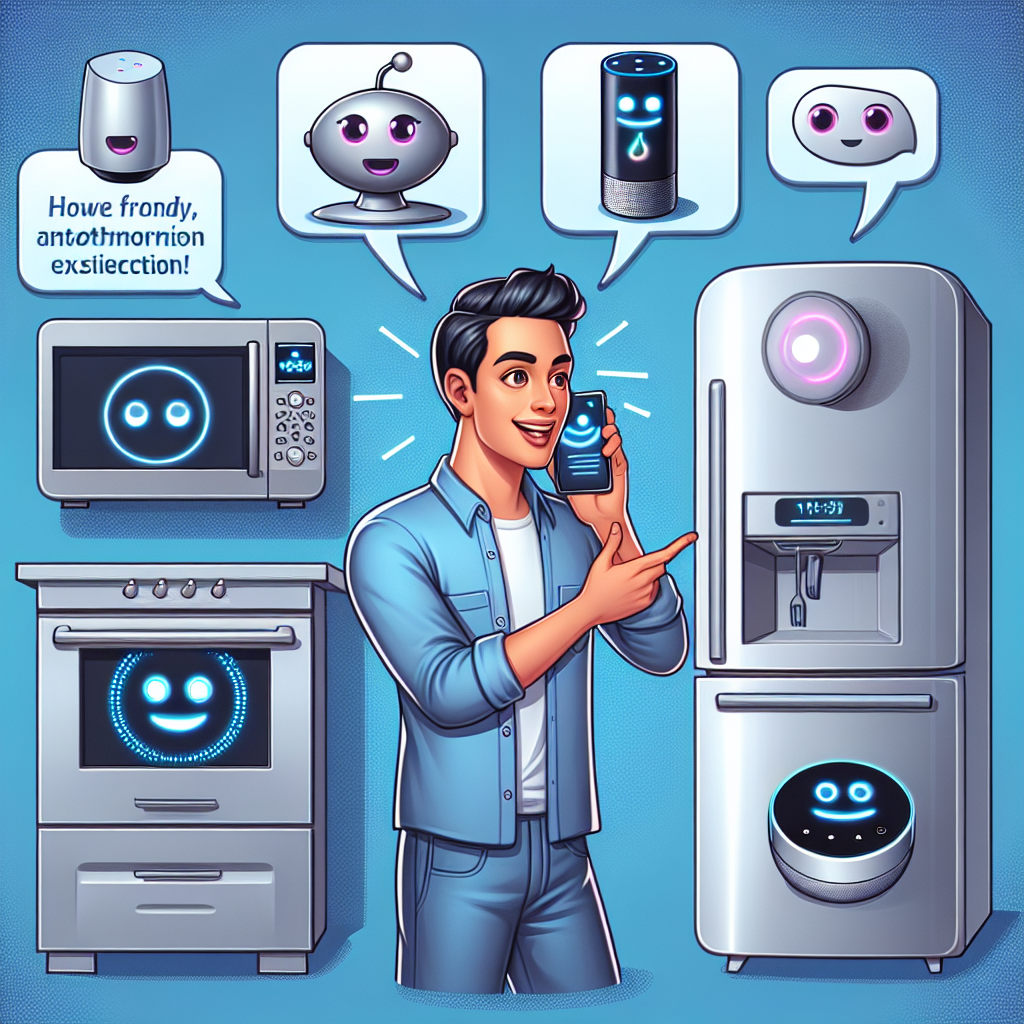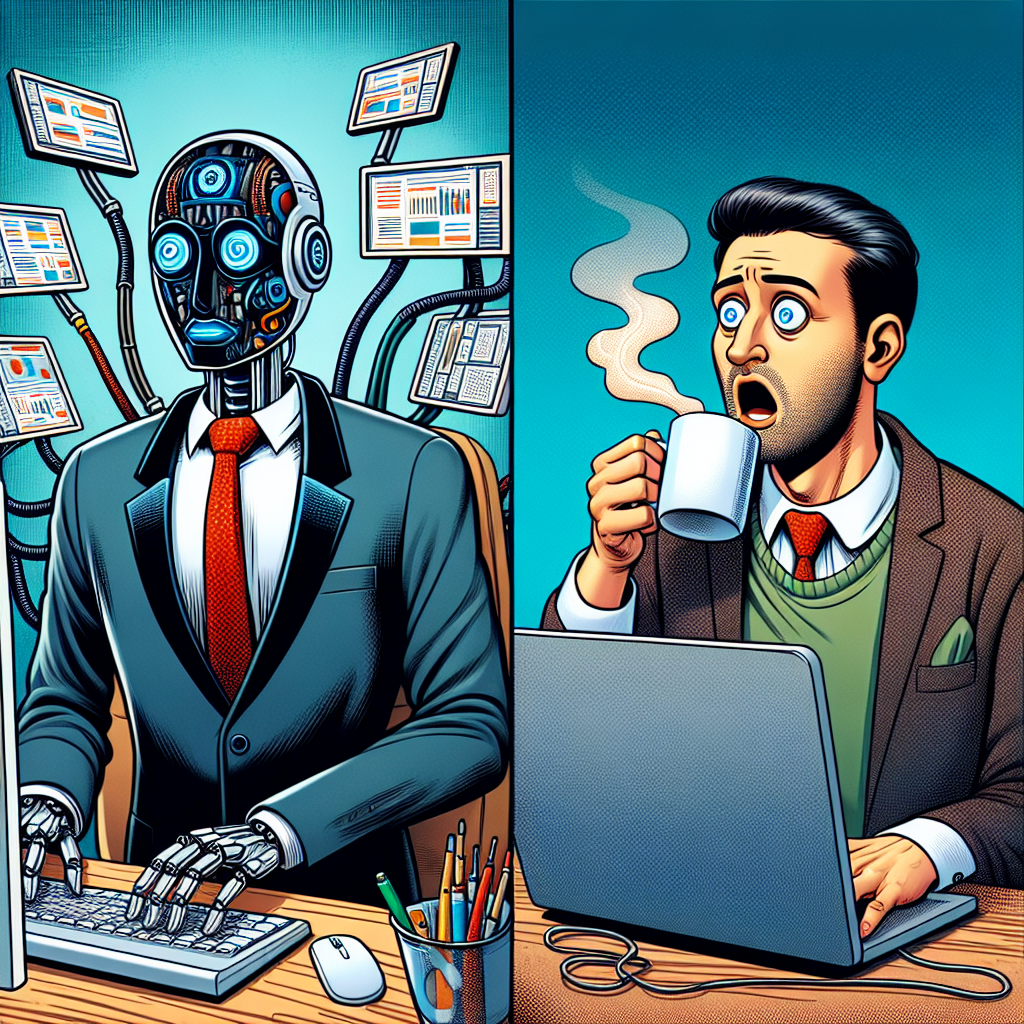Ever felt like the cool kids’ tech club had a “coders only” sign hanging on the door? Well, grab your cape and mask because there’s a new breed of superheroes in town – and surprise, surprise, they can’t write a single line of code! Thanks to AI SaaS creation platforms, regular Joes and Janes are now wielding tech superpowers that would make even seasoned developers raise an eyebrow.
Picture this: Sarah, a marketing consultant who once thought “Python” was just a large snake, recently launched an AI-powered content analyzer that’s making waves in her industry. Her secret? She didn’t spend years learning to code – she simply leveraged an AI SaaS creation platform that turned her brilliant idea into reality.
“I always had this vision for a tool that could help small businesses analyze their content strategy, but I thought I’d need to hire expensive developers,” Sarah laughs. “Now I’m the one people are calling a tech genius, and I still can’t tell JavaScript from a coffee script!”
This democratization of app development isn’t just a cute trend – it’s a full-blown revolution. AI SaaS creation platforms are tearing down the technical barriers that once kept innovative ideas locked inside non-technical minds. Entrepreneurs who previously needed a technical co-founder or expensive development team can now bring their visions to life independently, armed with nothing but their creativity and these powerful platforms.
The Low-Code Revolution: No PhD Required!
Remember when building an application was like trying to assemble IKEA furniture without instructions – in the dark – while wearing mittens? Those days are disappearing faster than free donuts in an office break room. Low-code platforms have become the great equalizers in the tech world, allowing users to create sophisticated applications through visual interfaces rather than typing out endless lines of code.
“Low-code platforms are like giving someone a power drill when they’ve been using a screwdriver,” explains tech analyst Miguel Rodriguez. “Suddenly, what took days takes hours, and what seemed impossible becomes not just possible, but actually pretty fun.”
These platforms typically feature drag-and-drop interfaces, pre-built components, and visual workflow builders that transform complex programming concepts into intuitive building blocks. It’s like going from having to build a car from scratch to simply selecting and arranging pre-made parts – you still get a custom vehicle, but without needing to know how to forge metal or build an engine.
The beauty of low-code platforms lies in their accessibility. A restaurant owner can create a custom ordering system. A teacher can build an interactive learning application. A healthcare provider can develop a patient management solution. All without writing a single line of code or understanding what the heck an “object-oriented programming paradigm” is (and honestly, who does?).
According to recent industry reports, businesses using low-code platforms are developing applications up to 10 times faster than traditional coding methods. This isn’t just saving time – it’s completely transforming who gets to participate in the digital creation economy. And when you combine these low-code capabilities with AI technologies? That’s when things get really interesting.
AI and Low-Code: A Match Made in Tech Heaven
If low-code platforms opened the door to app development for non-coders, then AI integration just installed a welcome mat, mood lighting, and a fully-stocked refrigerator. The marriage of AI with low-code platforms has created an environment where intelligent collaboration isn’t just possible – it’s practically automatic.
Today’s AI SaaS creation platforms don’t just let you build applications; they actively help you build them better. Think of AI as your extremely competent assistant who never needs coffee breaks or complains about the office temperature. These platforms can suggest optimal workflows, identify potential improvements, and even generate functional components based on natural language descriptions.
“I told the platform I needed a way to analyze customer sentiment from survey responses,” says Jamal, a small business owner who recently launched his customer feedback application. “The AI suggested a pre-built sentiment analysis component, configured it for my specific needs, and integrated it with my dashboard – all from basically a conversation we had. It was like having a senior developer working alongside me.”
For small businesses and startups, this level of intelligent collaboration is nothing short of revolutionary. Teams that couldn’t afford to hire specialized AI developers can now implement sophisticated machine learning capabilities with minimal effort. Workflow automation that once required complex integration work can be established through simple visual interfaces, freeing up valuable time and resources for innovation rather than implementation.
The data backs this up: according to a recent survey, small businesses using AI-powered low-code platforms reported a 40% reduction in development time and a 35% decrease in overall project costs. For cash-strapped startups, this efficiency isn’t just convenient – it could be the difference between success and failure.
Meet Your New Digital Workforce: Customizable AI Digital Workers
Remember The Jetsons and their robot maid Rosie? We’re not quite there yet (though I’m still holding out hope), but customizable AI digital workers are bringing us surprisingly close to that futuristic vision.
These aren’t your basic chatbots or simple automation scripts. Modern AI SaaS creation platforms allow entrepreneurs to design sophisticated AI agents that can handle complex tasks, learn from interactions, and continuously improve their performance.
Take Michelle, a solo wedding planner who created an AI digital assistant that handles initial client consultations, schedules appointments, and even generates preliminary design concepts based on client preferences. “I basically cloned the best parts of myself,” she explains. “My AI assistant handles the repetitive consultations while maintaining my voice and approach, freeing me to focus on the creative aspects I love.”
The key innovation here is customization. These platforms don’t just offer generic AI capabilities – they allow users to tailor AI digital workers to their specific needs, industry knowledge, and brand voice. A financial advisor can create an AI agent that reflects their investment philosophy. A legal consultant can develop a digital worker that incorporates their specific expertise in contract law. The possibilities are virtually endless.
For individual entrepreneurs, this represents nothing less than a multiplication of capabilities. Suddenly, a one-person operation can provide 24/7 customer service, handle routine consultations, generate content, and manage administrative tasks – all through customized AI digital workers that embody the entrepreneur’s unique approach and expertise.
“I finally got the team I always wanted,” jokes Marcus, a freelance marketing consultant who built a suite of specialized AI assistants. “And the best part is, they never ask for raises or take the last cup of coffee without making more.”
Personal AI Products: Your Ideas, Your Rules
While digital workers handle tasks within a business, personal use AI products represent another exciting frontier in the AI SaaS creation revolution. These are applications designed specifically for individual use cases, addressing unique challenges or opportunities that off-the-shelf solutions simply can’t match.
Consider Emma, a nutritionist who struggled to find software that could generate personalized meal plans based on her specific methodology. “Existing apps didn’t incorporate my approach to macronutrient balance and food combining,” she explains. “So I built my own AI-powered meal planning tool that perfectly aligns with my nutrition philosophy. Now I use it with all my clients.”
The ability to create personal use AI products addresses a fundamental truth about innovation: the person closest to a problem often has the best insight into solving it. Now, that person doesn’t need to convince a development team to build their solution – they can create it themselves using AI SaaS creation platforms.
This capability is particularly valuable for professionals with specialized knowledge. A physical therapist can create an AI-powered exercise recommendation engine. A language teacher can develop a personalized learning application. A financial advisor can build a custom investment analysis tool. In each case, the creator’s unique expertise is embedded directly into the application, without being diluted through technical translation.
“I had this idea for years,” says Raj, a productivity coach who built an AI-powered habit formation application. “But every time I talked to developers, something got lost in translation. Building it myself meant that every feature reflects exactly what I know works for my clients.”
Share, Sell, Succeed: Building an AI Product Ecosystem
Here’s where things get really interesting. Once non-coders create these amazing AI applications, many platforms allow them to share and sell their creations, contributing to a growing ecosystem of user-generated AI products. It’s like if you could not only cook an amazing dish but also immediately open a restaurant to serve it to the world.
This open market approach is creating entirely new entrepreneurial opportunities. Developers and technical professionals who once had to build everything from scratch can now focus on extending and enhancing existing applications. Meanwhile, subject matter experts without technical backgrounds can monetize their knowledge through AI applications that embody their unique insights.
“I created my inventory management system because I needed it for my own small business,” explains Taylor, who now sells her application to other retailers. “I never expected it to become a second revenue stream, but now it generates almost as much income as my original business.”
The ecosystem effect creates powerful network benefits. Each new application adds value to the platform, attracting more users who in turn create more applications. Developers can build upon each other’s work, accelerating innovation across the entire ecosystem. This collaborative environment promotes continuous improvement and specialization, with applications evolving to address increasingly specific use cases.
The economic impact is substantial. A recent study found that creators on leading AI SaaS platforms earned over $500 million collectively in the past year, with individual success stories ranging from supplemental income to multi-million-dollar businesses built entirely on user-created AI applications.
The Future is Accessible: Zygote.AI’s Vision Come to Life
The democratization of AI application development represents the realization of a philosophy that companies like Zygote.AI have championed from the beginning: creation should be accessible to all. When powerful technologies remain locked behind technical barriers, we all lose out on the innovations that could emerge from diverse perspectives and experiences.
By making AI creation accessible through user-friendly AI tools and workflow automation, these platforms are transforming not just software development but the very nature of work itself. Tasks that once required specialized teams can now be accomplished by individuals. Processes that were too complex for small businesses to implement are now within reach. Ideas that might never have seen the light of day can now become reality.
“The most exciting applications we’re seeing aren’t coming from traditional software companies,” notes Dr. Lisa Chen, AI innovation researcher. “They’re coming from experts in healthcare, education, finance, and countless other fields who finally have the tools to bring their insights to life through technology.”
This accessibility is particularly transformative for small businesses and startups operating with limited resources. An AI SaaS creation platform effectively serves as a force multiplier, allowing lean teams to accomplish what once required much larger organizations. A three-person startup can now build, deploy, and scale sophisticated AI applications that would have previously demanded a dedicated development team and significant capital investment.
The future of this technology promises even greater accessibility. As AI agent technology continues to advance, we’re moving toward a world where applications can be created through natural conversation, with AI systems translating concepts directly into functional software. The technical barriers will continue to fall, bringing us closer to a world where if you can describe what you want to build, you can build it.
In this new landscape, the limiting factor isn’t technical skill – it’s imagination. And that’s a resource we all possess in abundance. So whether you’re an entrepreneur with a brilliant idea, a small business owner looking to streamline operations, or simply someone who wants to solve a problem, remember: the tools to bring your vision to life are now within reach. The question isn’t whether you can code – it’s what you’ll create next.









